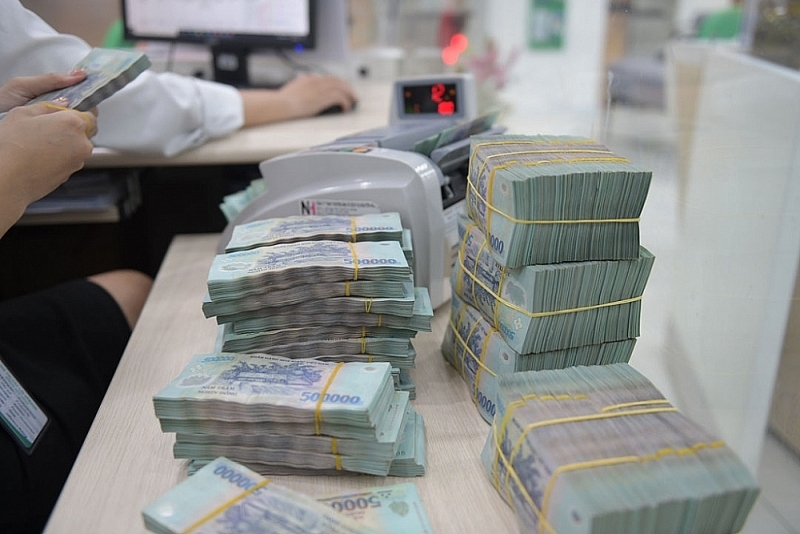Interest rates continue to decrease further to push money out into the economy
Interest rates on both the interbank and transaction markets among banks, people and businesses continued to decrease.
Abundant liquidity helps interest rates tend to decrease
According to data from the State Bank of Vietnam (SBV), the average overnight VND lending interest rate has dropped to a very low level, only around 1%. Interest rates for other terms are also quite low, with 1-week term at 1.41%, 2-week term at 1.87%, 1-month term at 2.54%, and 3-month term at 5.25%.
At the end of last week, overnight lending rates even fell below 1%.
The deep drop in the overnight interbank interest rate shows that the cost of borrowing between banks has fallen sharply in recent weeks. Therefore, the interbank transaction value is high, with VND 220,000-230,000 billion/ session.
 |
|
Interest rates continue to be mobilized for further reasonable reductions. Photo: ST |
According to experts of SSI Securities Company, liquidity in the banking system continues to be stable and operates on a quiet open market channel. Abundant liquidity made interbank interest rates tends to decrease. However, liquidity will be under more pressure this week as seasonal factors at the end of the quarter may cause interbank interest rates to rebound slightly.
Not only the interbank market but excess liquidity has also helped deposit interest rates drop sharply in recent months. Market surveys from the beginning of June to now show that the highest deposit interest rate is at just over 8%/year for a term of more than 12 months, mainly at small and medium-sized banks. At big banks, the 12-month term deposit interest rate is only about 7%/year. State-owned commercial banks have the market's lowest 12-month deposit interest rate of 6.3 %/year.
According to the State Bank, the average deposit interest rate in VND of domestic commercial banks is 0.2%/year for demand deposits with terms of less than one month, 5.1-5.2%/year for deposits with a term from 1 to less than six months, 7.2-8.7%/year for deposits with a term from 6 to 12 months; 6.9-8.2%/year for deposits with terms from 12 to 24 months and 7-8.4%/year for terms over 24 months.
Assessing the move to reduce interest rates on a large scale during this time, economist Assoc. Prof. Dr Dinh Trong Thinh said that the SBV's four consecutive reductions in operating interest rates within the first half of 2023 had created favourable conditions for commercial banks to reduce deposit interest rates simultaneously. This helps the savings deposit interest rate anchor as high as in the previous period, no longer attractive to attract capital from the leading population. As a result, this will be the driving force to help money flow into other areas of the economy.
Recently, Standard Chartered Bank has forecasted that the SBV will cut the benchmark refinancing rate by 50 basis points to 4% in the third quarter, equal to the interest rate during the pandemic years and will remain unchanged until the end of 2025.
Banks seek the disbursement of capital
With these moves, lending interest rates are assessed by experts as going down so that banks can boost capital to the economy because credit as of June 15 only increased by 3.36% compared to the previous year. With the end of 2022, the lending space of commercial banks is still quite large to achieve the target credit growth of 14-15% for the year.
Many banks have announced new interest rate reduction programs, as Vietcombank has implemented two programs to reduce interest rates for existing customers, helping more than 110,000 customers to reduce interest rates; MSB has reduced lending interest rates for the second time this year for customers with existing outstanding loans with a reduction of up to 1%/year.
Talking to the press recently, a representative of the State Bank of Vietnam said that the State Bank would continue to lobby commercial banks to reduce deposit rates and costs to reduce loan interest. This person said that when the operating interest rate has decreased, commercial banks must share by sharing profits and reducing operating costs to reduce lending rates. The SBV also said it was ready to provide liquidity support to banks to lend to programs approved by the Government and the Prime Minister.








